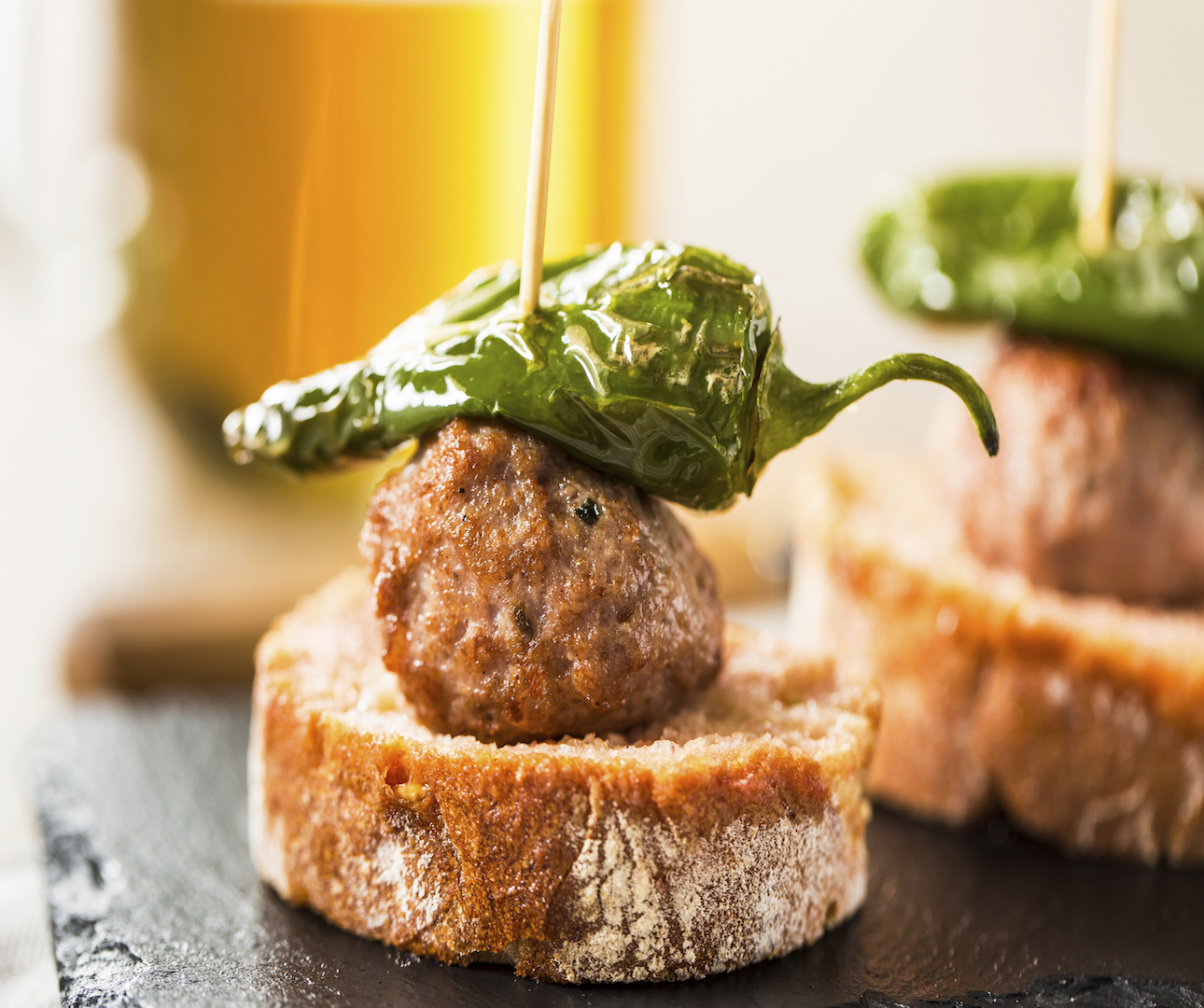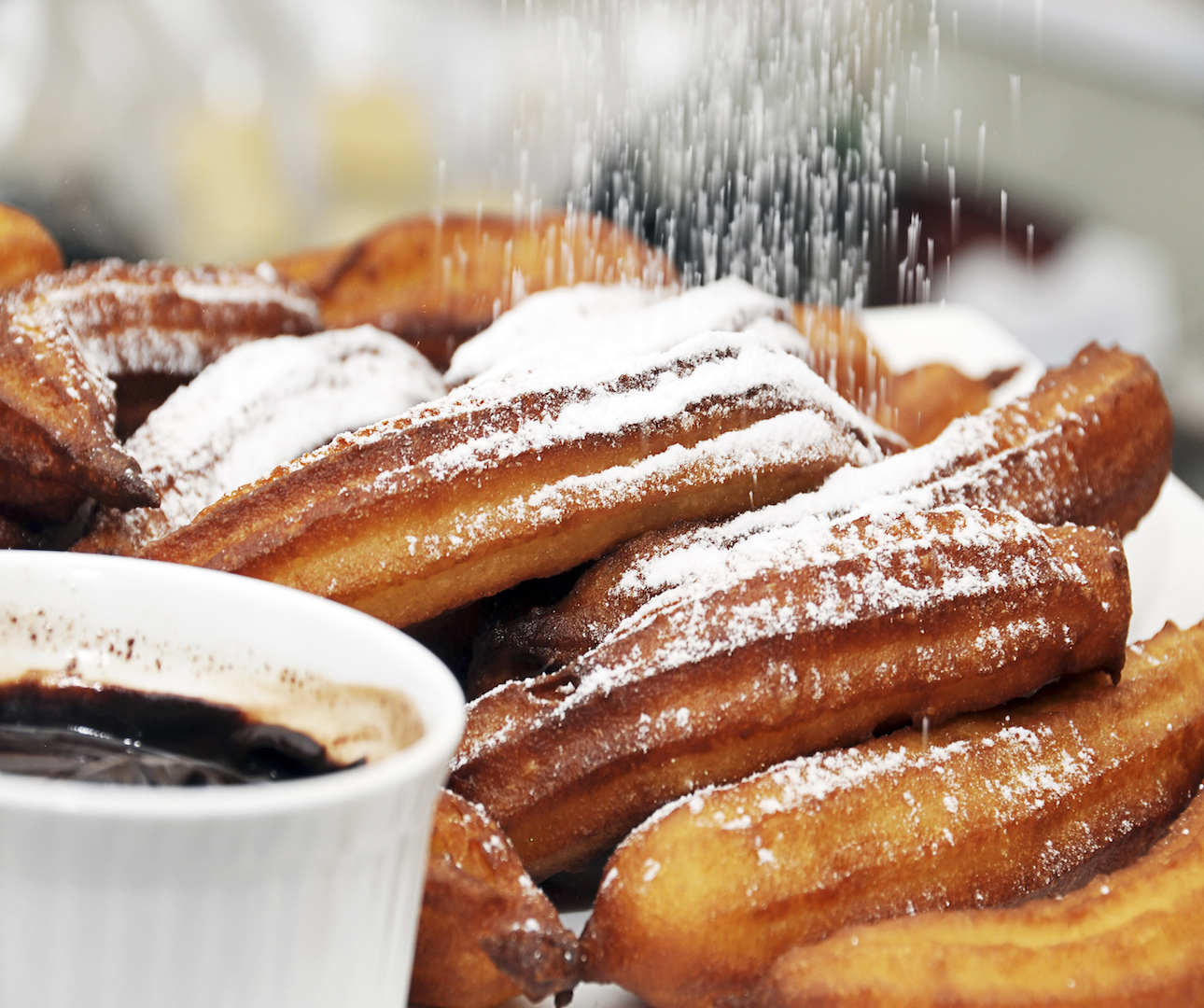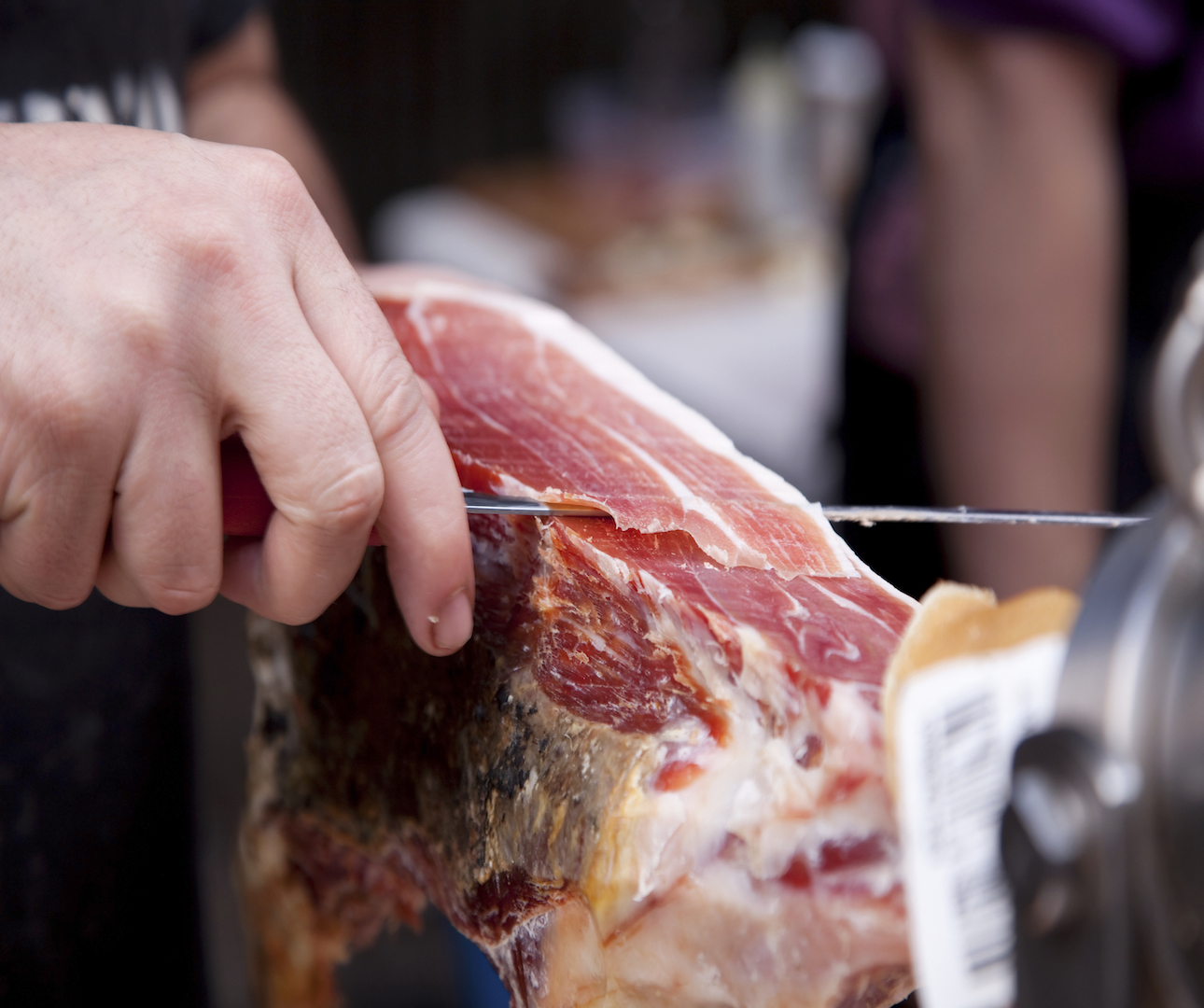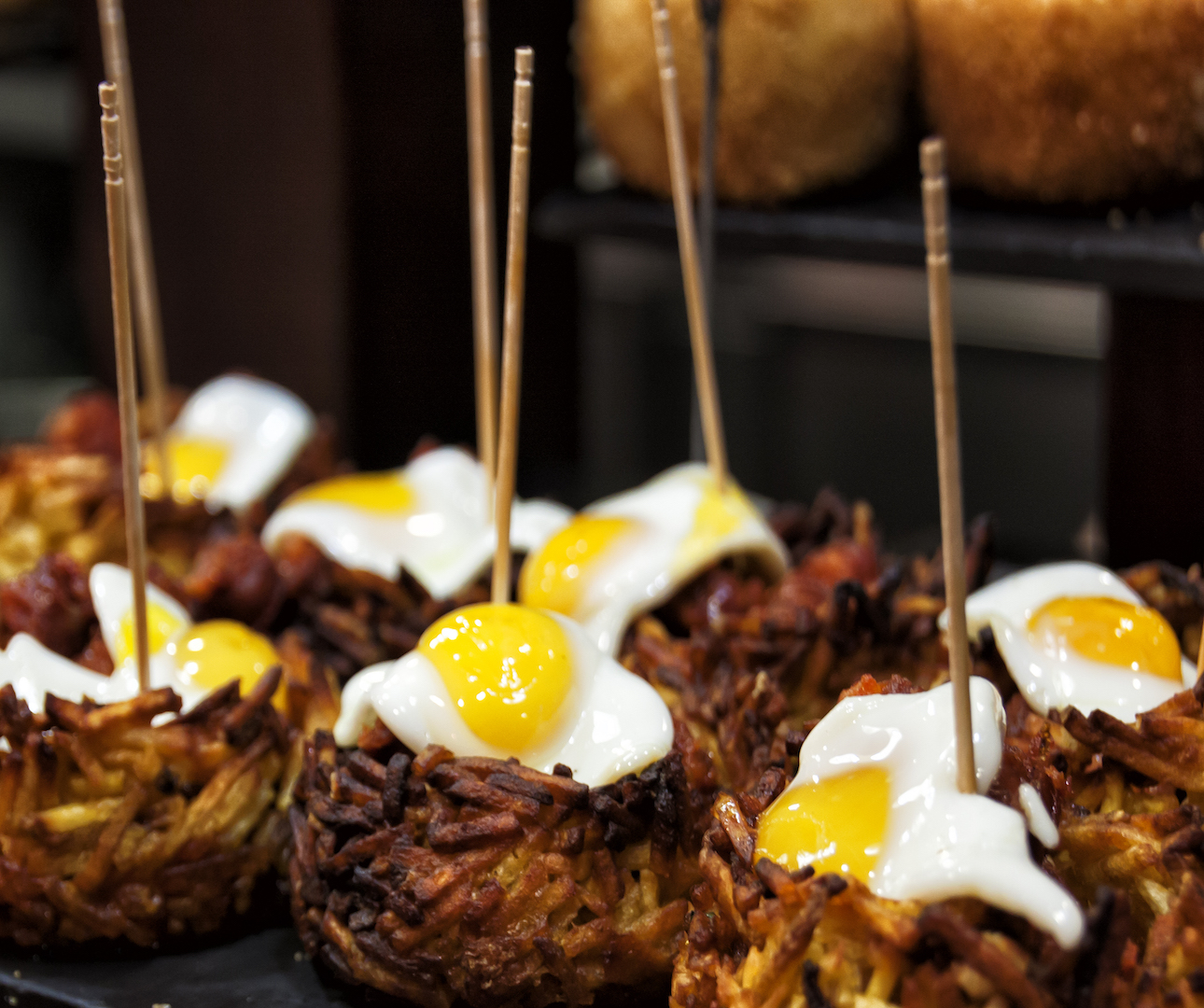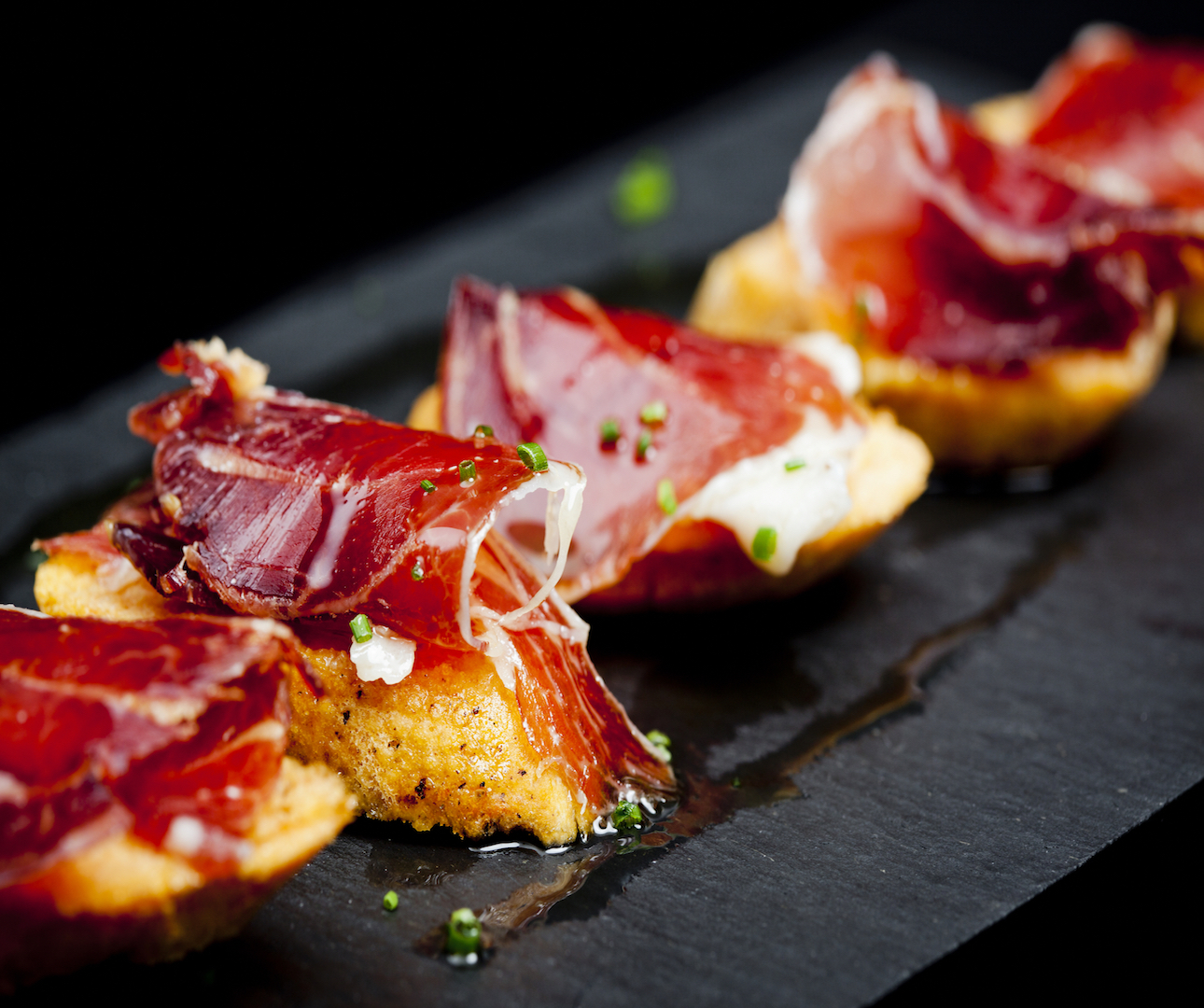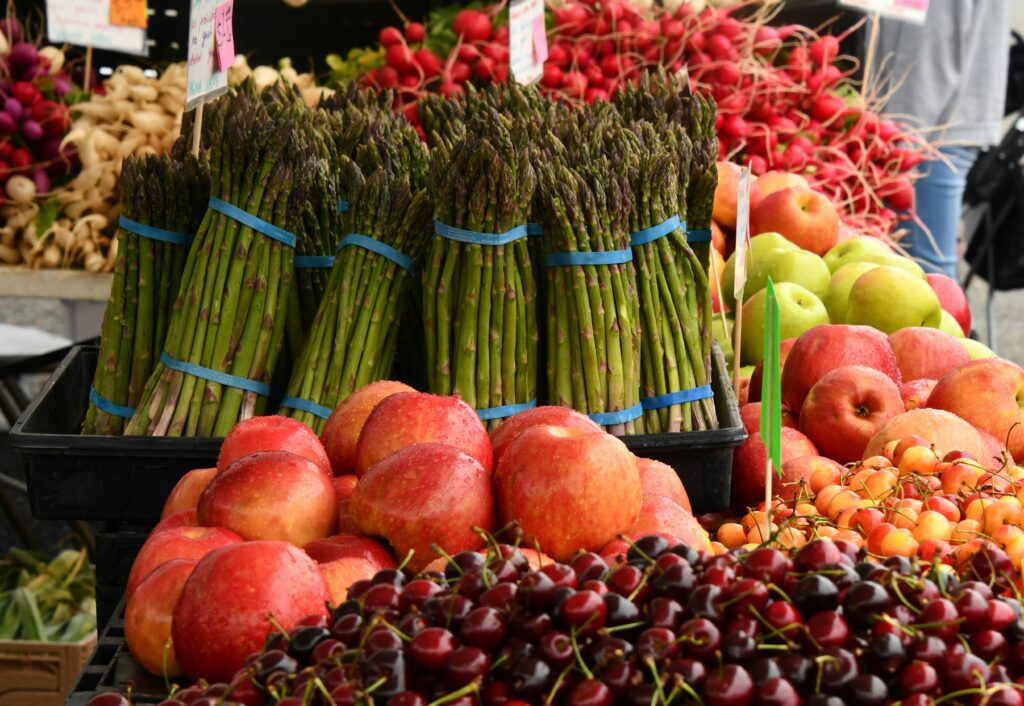Despite being one of the world’s most popular cuisines, Spanish food can seem complicated to those who are new to the country. With cocido, pintxos, paella and other foreign labels to navigate on a menu, it’s easy to make mistakes, and with so many regional specialties, even Spanish people can occasionally get confused. From Galician seafood to Castilian cheeses, Navarra chorizo to Andalusian gazpacho, the medley of dishes that each region brings to Spain’s culinary table reflects the nation’s most acclaimed food phenomenon: tapas. From bacalao to butifarra, we’ve put together a guide to how to order food in Spain, so you can be sure to sample the very best of the country’s cuisine on your next trip.
Meatball Tapas © AlexSalcedo/iStock
Do you seat yourself at restaurants in Spain?
It depends on where you’re dining. It’s good manners to always try catch the waiter’s attention rather than seating yourself, but there are a few situations where you can seat yourself.
Tapas bars are often a free-for-all. If the restaurant is packed and a table opens up, feel free to try snag your spot. Likewise for restaurants with no wait list and tables outside. People tend to linger near tables that are finishing up – when they leave, the lingerers swoop in. If you wait for a busy waiter to assign you a table, you’ll probably miss out on these seats. If lots of tables are available in either of these places, then check with the waiter first.
How do you politely order food in Spain?
You’ll have to call the waiter over, which isn’t always easy – Spanish restaurants often don’t have a lot of wait staff. In Spanish culture, a good waiter actually leaves you alone unless you specifically call them over. You can do so by saying perdón, which means ‘excuse me’. Using a Spanish word like that is a very polite way of getting a waiter’s attention before you order food. Then go on and say ‘estamos listos para pedir’ if you are more than one person. This means ‘we are ready to order’.
Common phrases when ordering food in Spanish:
Vamos a compartir: Sharing small plates is a huge part of Spanish culture. So telling a waiter we’re going to share will be met with a nod of warm acknowledgement: you’re embracing the Spanish way!
Carta: This is the Spanish word for menu. The word menú actually refers to a fixed price lunch menu often not adverised. Don’t mix up menú and carta!
Una copa de vinto tinto/blanco: This means a glass of red/white wine. Always a handy thing to know when dining in the world’s third largest wine producer.
Porfa/porfi: This is a shortened way of saying por favor (please). It makes you sound more like the locals, who often shorten common words.
Muchas gracias. ¡estaba muy rico!: Say this on your way out if you want to pay compliments to the chef. In a country like Spain, we’ve no doubt you’ll be using this phrase often.
What do you order when you want a meal in Spain?
If you want to know how to order food in Spain, you’ll need to know what the dishes are. Here are some common words you may see on a carta or two in Spain.
Bacalao: Salted Cod
A specialty of the Basque country, bacalao can be prepared in several ways, usually with an assortment of onions, garlic, red choricero peppers and olive oil, none of which are particularly controversial or complicated. If you want to know how to order food in Spain, try to refrain from offering an opinion on whether it all goes well with tomatoes; this is very much a live issue!
Butifarra: Blood Sausage
A bit like black pudding popular in the UK and Ireland (it also has black and white varieties); butifarra is made of raw pork and spices, and features in a lot of Catalan cooking. Though sometimes not cooked at all, when grilled the sausage is usually accompanied by fava beans.
Churros: Spanish doughnut
One of those strange dishes that can be eaten either for breakfast or dessert, churros can be made thin and knotted or long and thick. Usually dusted in sugar or accompanied by a cup of hot chocolate sauce (churros con chocolate), these delights are wonderfully addictive.
Churros © yula/iStock
Cochinillo: Suckling Pig
Roasted to perfection throughout Castile, Segovia is known to have achieved the best version of this dish. Popular ever since Roman times, in traditional areas the piglet is still cooked in earthenware pots and yields a succulent meat with tender, crispy skin.
Cocido: Traditional Stew
Fragrant, rich and usually cooked in a vast cauldron that simmers away all day, cocido is one of Spain’s lesser-known national dishes. Traditionally composed of chickpeas, meats, potatoes and black pudding, in reality as long as the base is right, many restaurants add whatever ingredients they want.
Gazpacho: Vegetable Soup
Often considered one of Spain’s greatest examples of peasant or shepherd food, gazpacho varies in color between red, white and green varieties. Among the usual ingredients of bread, olive oil and garlic paste, the red contains tomatoes, the white contains dried fruits and the green contains a lot of herbs. The most famous variety comes from Andalusia, where it’s typically served cold.
Slicing Cured Ham © photocritical/iStock
Jamón Ibérico: Iberian Ham
Also known as pata negra, this ham is one of Spain’s most popular exports. Most of it is produced in the ‘pig heartlands’, the southwestern region the Iberian Peninsula, and especially in Seville. Cured and air-dried, it’s a bit like prosciutto in style and its finest variety comes from pigs that are fed on acorns.
Paella: Rice Medley
Paella needs no introduction, but the traditional conception of it as a seafood dish needs revision. Many purists despise this as an innovation and prefer the varieties that hail from the dish’s city of origin, Valencia. This means a mix of rabbit and chicken, flavored with saffron.
Patatas Bravas: ‘Fierce Potatoes’
How to order food in Spain: never ask for ‘fries’. You want to ask for patatas fritas. In fact, there are lots of potato dishes in Spain and the label usually gives the game away (patatas alioli, for example), but the most popular is undoubtedly patatas bravas. Called ‘fierce’ because of the spicy mustard, tomato and Tabasco sauce, this is one of the county’s classic dishes.
Egg and Potato © PhotosTime/iStock
Pintxo: Spike
Taking its name from the toothpick that the food is impaled upon, pintxos or pinchos are little spikes of food, from cod to anchovies, from croquettes to vegetables, often accompanied by a small glass of beer or young white wine. In the south, a variation called montaditos involves serving toppings such as ham and cheese atop a slice of stone oven-baked bread.
Raciones: Rations
Simply larger plates of tapas (see below). Perfect for sharing and sometimes enough for a meal.
Tapas: Small Dishes
Tapas are small appetizers enjoyed before a meal or with aperitivos. Watch out for changing labels again though, anchovies (a common tapa) are boquerones in the south, yet pass for anchoas in the north (and those from Santoña are known to be the best).
Cured Spanish ham and bread snack ready to eat © JOSEJUANGARCIA/iStock
Tasca: Tavern
There are lots of different kinds of eateries in Spain. Tascas, bodegas and tabernas are taverns; cervecerias are pubs; comedors are dining rooms; ventas or mesones are inns; asadores specialize in grilled meats; and marisquerias are seafood restaurants.
If talk of chilled gazpacho, sugary churros and salted bacalao has you wishing you had a Spanish menu in your hands, why not book a place on the Easy Pace Spain itinerary with some of Iberia’s greatest hits playing in the background. Here’s a playlist to get you started:
If you’re looking for a more extensive exploration, consider joining our guided tour of Spain and Portugal, offering the perfect opportunity to immerse yourself in the culinary delights of both countries.
